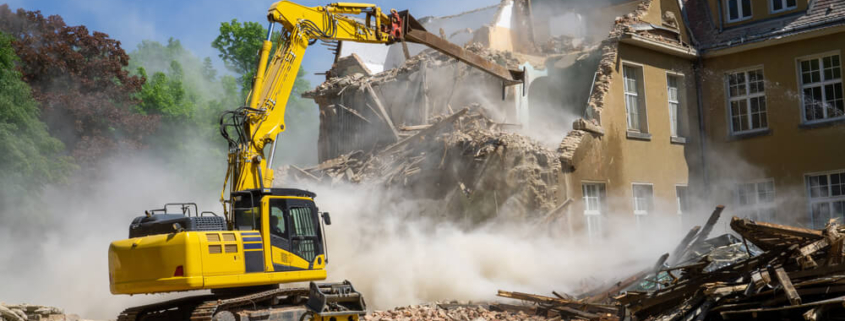The Dangers of Structural Collapses during Demolition Work
Recently, one worker lost his life, and another was injured in a structural collapse at a closed power plant in Mason County, WV. The workers were in the process of dismantling the plant and salvaging materials from it when the structure collapsed prematurely. Unfortunately, this was far from an isolated incident – it is one of many tragic events that happen frequently at workplaces in West Virginia and throughout the country.
Demolition work is the most dangerous job in the construction industry, which itself is an industry that has one of the highest workplace injury rates. And the untimely death of the worker at the old Mason County power plant is a stark reminder of just how hazardous demolition jobs can be.
What Causes Structural Collapses during Construction Work?
There are several reasons why building structures collapse during construction or demolition work. Some of the most common include:
- Poor Structural Integrity: When a building or structure has a proper foundation, there is the promise that the weight of the building can be supported, and that the integrity of the structure will be protected. When there is poor structural integrity, there is a much greater likelihood of a collapse.
- Too Much Weight/Overload: In some situations, more weight is placed upon a structure than it can handle. This most often occurs when heavy equipment or machinery is placed on a structure during the process of building or dismantling it. An adequately sound structure is one that can hold up under reasonable use, but every structure has its limits, and too much weight can cause it to reach a breaking point.
- Bad Engineering/Design Flaws: Sometimes, poor structural integrity could be traced back to poor engineering and/or flaws in the design. Structural engineers sometimes make mistakes and perform incorrect calculations. If designs are not checked and double checked for potential flaws, their implementation on a construction project can result in a structural failure.
- Use of Inferior Materials: Some contractors and firms try to cut corners and save money by using substandard building materials. Using poor quality materials will cause the structure to degrade prematurely over time, vastly increasing the risk of a collapse.
- Negligent Maintenance/Deterioration: Lack of proper maintenance will lead to important things being missed, needed repairs not being made, and accelerated deterioration possibly to the point of a collapse.
- Structural Damage: Various types of events can cause irreparable damage to a building structure, sometimes to the point where it collapses. For example, if someone crashes a large vehicle into a building, it can cause a partial or total structural collapse. The best-known modern example of this was when both towers of the World Trade Center in NYC were struck and brought down by hijacked airplanes on September 11, 2001.
- Soil Erosion: The erosion of soil underneath a structure (either by man-made or natural causes) can create a sinkhole, which could result in a structural collapse.
- Inadequate Safety Measures: When a company that is overseeing the construction, renovation, or demolition of a building does not strictly adhere to government safety standards and best practices, it puts their workers in danger and increases the likelihood of a collapse.
The Unique Hazards of Deconstruction and Demolition Work
As we talked about earlier, deconstruction and demolition are the most dangerous types of construction work. One major reason is that contracting companies may not fully understand the structural principles of the building they are working on. So, going back to the Mason County power plant where a structural collapse caused a fatal injury, the workers were deconstructing, dismantling, and removing components and contents of the building for salvage.
This is common practice with decommissioned power plants as these materials can be recovered for resale, recycling, or reuse. But when an employee is required to work inside the building to deconstruct various materials that may still have value, they might end up removing something that is essential to support the structure. Removing certain equipment could also lead to dangerous explosions, which could cause structural damage and injure workers.
Before undertaking these types of deconstruction and demolition projects, it is incumbent upon those in charge to take every step necessary to thoroughly examine the structural elements of the building to make sure that the integrity of the structure is not compromised and workers are not needlessly put at risk. They may not be able to earn as much profit on the salvaging of materials, but it is high time these companies began putting people before profits.
Suffered a Workplace Injury in West Virginia? Contact Bailey, Javins, and Carter L.C. for Assistance
A collapsing structure is one of the most hazardous types of construction-related events, and as we saw with the recent power plant incident, the results can be catastrophic. If you or a loved one got injured in a structural collapse or suffered any other type of workplace injury, Bailey, Javins, and Carter L.C. is here to help! Message us online or call our office today at (800) 497-0234 or (800) 296-6979 for a free consultation with a member of our legal team. We look forward to serving you!




